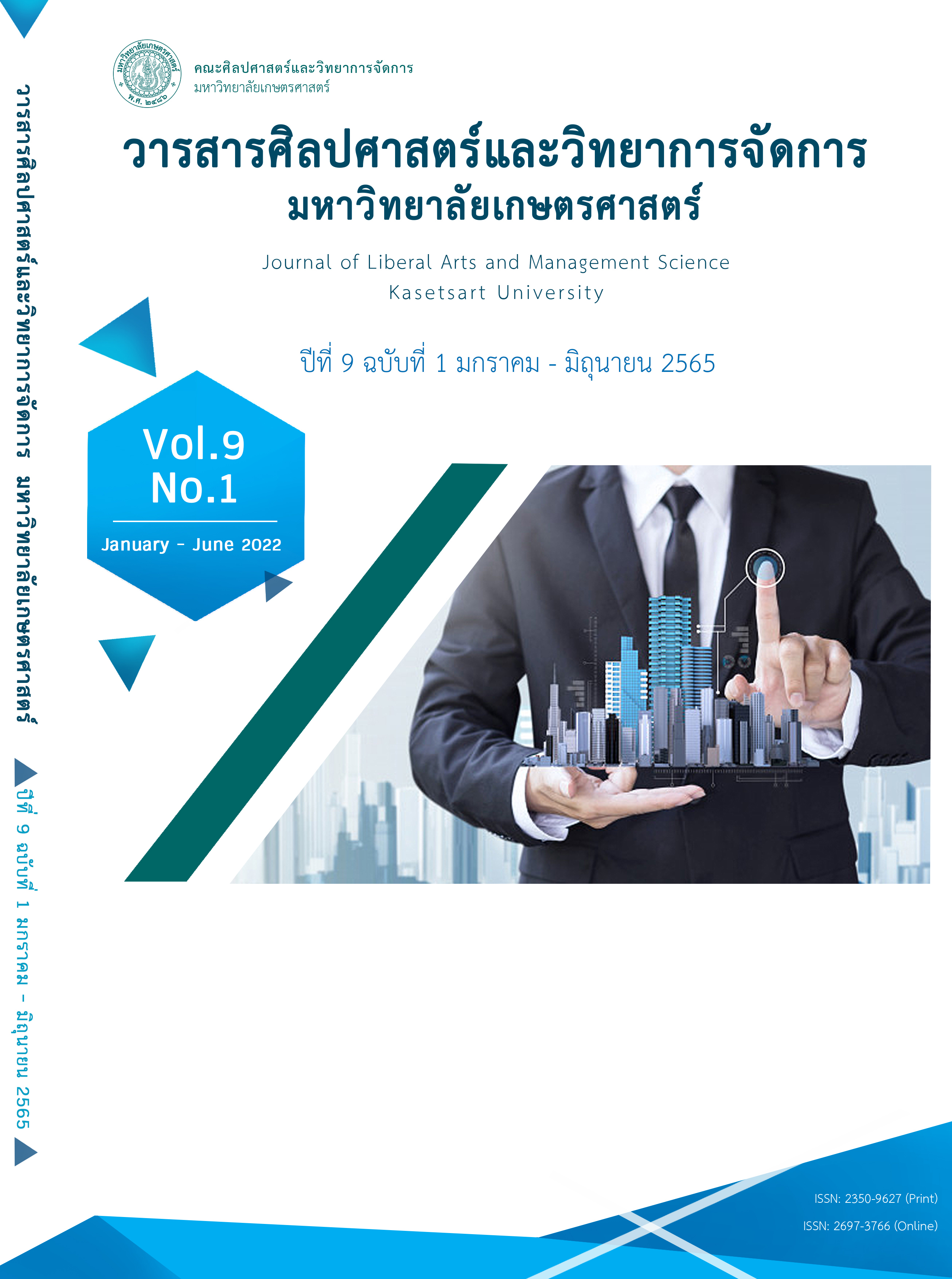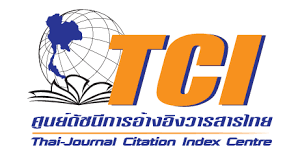A CONJOINT ANALYSIS OF PACKAGE RICE’S ATTRIBUTES ON CONSUMER SATISFACTION AND CONSUMER BEHAVIOR IN PURCHASING BAGGED RICE IN NAKHON PANOM
Keywords:
Conjoint Analysis, Packaged Rice, Product Attributes, Consumer BehaviorAbstract
This research has a purpose to perform a conjoint analysis of common attributes of bagged rice affecting consumer satisfaction and consumer behaviour in purchasing bagged rice in Nakhon Panom Province for making a marketing plan and developing bagged rice products by agriculturists or rice retailers. For create the appropriate survey, the feedback was gathering from 20 people. To selecting the attribution which impact to satisfaction of customer in the scope of survey creating. The data were collected from 400 consumers of bagged rice in Nakhon Panom Province. The result of the conjoint analysis revealed the common attributes of bagged rice contributing to consumers’ highest satisfaction, namely vacuum packaging, B pattern logo, B pattern slogan, nutrition facts, and unidentified agriculture sources. This information could serve as a guideline for developing rice packages to be more attractive and unique compared to those of the competitors in the market and for responding to the needs of consumers to increase their satisfaction. The results also showed that the consumers have the highest satisfaction on Jasmine rice. For instance, they always purchase rice at 5-8 kilograms per time from department stores followed by rice shops. The most influential factor on purchasing decisions is the consumers themselves. The results of the study on bagged rice purchasing behaviour can serve as a guideline for planning a bagged rice business targeting at 5 kg bagged rice sold specifically at rice shops.
References
Amol Singh and Ashish Trivedi. (2015). Sustainable green supply chain management: trends and current practices. Competitiveness Revies, 26(3), 265-288.
Baron, R. and Kenny, D. A. (1986). The moderator-mediator variable distinction in social psy-chological research: conceptual, strategic, and statistical considerations. Journal of Personality and Social Psychology, 51(6), 1173
Basher V. (2010). Vendor selection and quota allocation by using fuzzy topics and linear programming. Master of Engineering in Production Engineering. University of Delhi: India.
Carter, C. R., & Carter, J. R. (1998). Interorganizational determinants of environmental purchasing: initial evidence from the consumer products industries. Decision Sciences, 29(3), 659-684.
Ciegis, R., & Zeleniute, R. (2008). Ekonomikos pletra darnaus vystymosi aspektu. Taikomoji ekonomika: sisteminiai tyrimai, 2(1), 35-52.
Dawes, J., Romaniuk, J., & Mansfield, A. (2009). Generalized pattern in competition among tourism destinations. International Journal of Culture, Tourism and Hospitality Research, 3(1), 33-53.
Edwards, J. R., & Lambert, L. S. (2007). Methods for integrating moderation and mediation: A general analytical framework using moderated pathanalysis. Psychological Methods, 12(1), 1–22.
Elkington, J. (1994). Towards the sustainable corporation. California Management Review, 90(100). Winter.
Fortes, J. (2009). Green supply chain management: A literature review. Otago Management Graduate Review, 7, 51-62.
Green Kenneth, W., Inman, R. Anthony, Sower Victor, E., Zelbst Pamela, J. (2019). Impact of JIT, TQM and green supply chain practices on environmental sustainability. Journal of Manufacturing Technology Management, 30(1), 26-47.
Hair, J., Black, W., Babin, B., Anderson, r.,and Tatham, R. (2010). Multivariate data analysis. (7th ed). New Jersey: Pearson Educational International.
Hu, L. T., and Bentler, P. M. (1999). Evaluating model fit. In R. H. Hoyle (Ed). Structural Thousand Oaks, CA: Sage. Equation modelling: Concepts, issues, and applications. 76-99.
Hunt. (2002). Doctoral seminars in marketing theory: For incorporating the history of marketing practice and thought. Journal of Historical Research in Marketing. ISSN: 1755-750X.
James R. Stock. (1998). Development and Implementation of Reverse Logistics Programs, Oak-Brook, Illionois, Councilof Logistics Management.
John T.Mentzer. (2007). A market orientation in supply chain management. Journal of the Academy of Marketing Science, 35(4), 507-522.
Jose Antonio, Rosa Madhubalan and Viswanathan. (2007). Market orientation and performance in low-income countries: The case of Zimbabwean retailers. Product and Market Development for Subsistence Marketplaces. 215-257.
Kaynaka, E., & Kara, A. (2004). Market orientation and organizational performance: A comparison of industrial versus consumer companies in mainland China using market orientation scale (MARKOR). Journal of Industrial Marketing Management, 33(8), 743-753.
Kelloway, E. Kevin. (1998). Using LISREL for structural equation modeling. New Jersey: Sage Publication.
Kline, R. B. (2005). Principles and practice of structural equation modeling. New York: Guilford Press.
Koh SCL, Demirbag M, Bayraktar E, Tatoglu E, Zaim S. (2007). The impact of supply chain management practices on performance of SMEs. Industrial Management & Data Systems, 107(1), 103-124.
LMI Government Consulting. (2005). Best practices in implementing green supply chain. supply chain world conference and exposition, April, North America.
Mohanty RP, Deshmukh SG. (2005). Supply chain management: theories and practices. Delhi: Biztantra Publication.
Morgan-Lopez, A., Castro, F., Chassin, L., & MacKinnon, D. (2003). A mediated moderation model of cigarette use among mexican american youth. Addictive Behaviors, 28, 583-589.
Ngai, J. C. H., & Ellis, P. (1998). Market orientation and business performance: some evidence from Hong Kong. International marketing review, 15(2), 119-139.
Ninlawan, C., Seksan, P., Tossapol, K., & Pilada, W. (2010, March). The implementation of green supply chain management practices in electronics industry. In World Congress on Engineering 2012. July 4-6, 2012. London, UK. (Vol. 2182, pp. 1563-1568). International Association of Engineers.
Nunta, Supang., Ooncharoen, Nantana., & Jadesadalug, Viroj. (2012). The effects of service innovation strategy on business performance of spa business in Thailand. International Journal of Business Research, 12(3), 35–55.
Petersen, E. & Plowman, G. E. (1999). Business organization and management. Illinois: Irwin.
Quayle M. (2003). A study of supply chain management practice in UK industrial SMEs. supply chain management. An International Journal, 8(1), 79-86.
Rahbar, E., & Rahbar, E. (2008). To buy green and non-green products: What are the factors influencing customer purchase behavior. MBA Thesis, University Sains Malaysia.
Rao, P. (2006). Greening production: a south-east asian experience. International Journal of Operations and Production Management, 24(3), 289-320.
Rovinelli, R. J., & Hambleton, R. K. (1977). On the use of content specialists in the assessment of criterion-referenced test item validity. Retrieved November 1, 2021, from https://eric.ed.gov/?id=ED121845
Robinot, E. & Giannelloni, J. (2010). Do hotels “Green” attributes contribute to customer satisfaction? Journal of Services Marketing, 24(2), 157-169.
Salam, M. A. (2008, September). An empirical investigation of the determinants of adoption of green procurement for successful green supply chain management. In 2008 4th IEEE International Conference on Management of Innovation and Technology (pp. 1038-1043). IEEE.
Santos, J. B., & Brito, L. A. L. (2014). Toward a subjective measurement model for firm performance. Industrial Marketing Management, 9, 95-117.
Schmitt, N. (1996). Uses and Abuses of Coefficient Alpha. Psychological Assessment, 8, 350-353.
Shoham, A., & Rose, G. M. (2001). Market orientation: A replication, cross-national comparison, and extension. Journal of Global Marketing, 14(4), 5-25.
Slater, S. F., & Narver, J. C. (1995). Market orientation, and the learning organization. Journal of Marketing, 59(3), 63-74.
Srivastava, S. K. (2007). Green supply‐chain management: a state‐of‐the‐art literature review. International journal of management reviews, 9(1), 53-80.
Subramanian, R., & Gopalakrishna, P. (2001). The market orientation-performance relationship in the context of a developing economy an empirical analysis. Journal of Business Research, 53(1), 1-13.
Tan KC. (2002). Supply chain management: practices, concerns, and performance issues. Journal of Supply Chain Management, 38(1), 42-53.
Tse, A.C. B., Sin, L. Y. M., Yau, O. H.M., Lee, J. S. Y., & Chow, R. (2003). Market orientation and business performance in a Chinese business environment. Journal of Business Research, 56, 227-239
Wendy L. Tate. (2016). The impact of strategic organizational orientations on green supply chain management and firm performance. International Journal of Physical Distribution & Logistics Management, 46(3), 269-292.
Wood, V., Bhuian, S., & Kiecker, P. (2000). Market orientation and organizational performance in notfor-profit hospitals. Journal of Business Research, 48(3), 213-226.
Zhu & Sarkis, (2004). Relationships between operational practices and performance among early adopters of green supply chain management practices in Chinese manufacturing enterprises. Journal of Operations Management, 22(3), 265–289.
Zhu, Sarkis & Geng, (2005). Green supply chain management in China: pressures, practices and performance. International Journal of Operations and Production Management, 25, 449–468.






